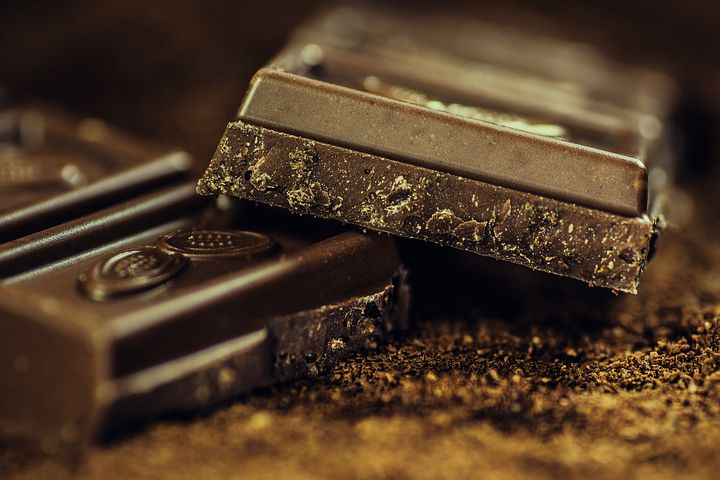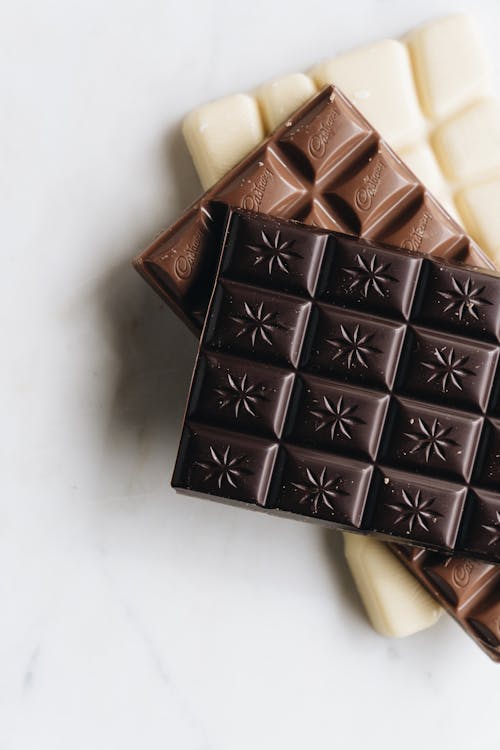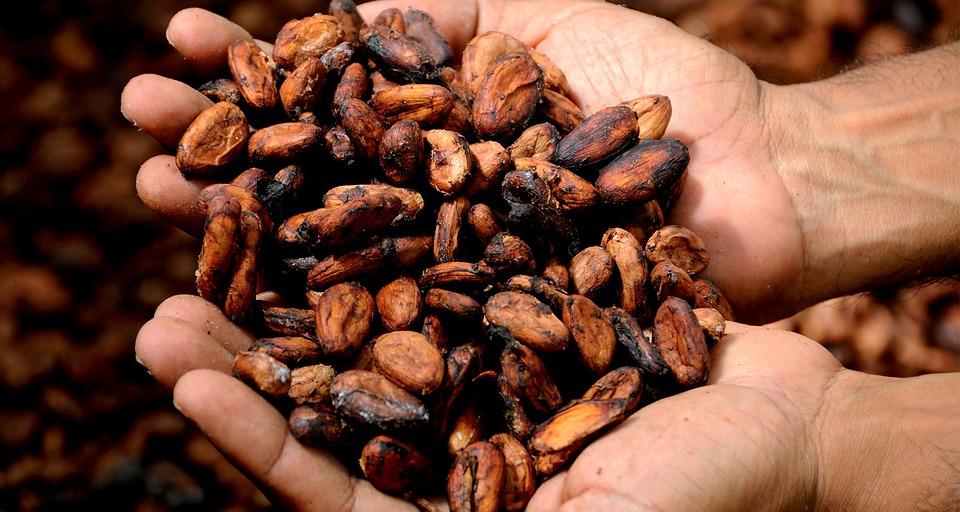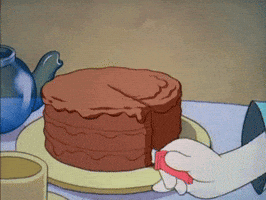
Hello, readers! Did you know that August 4th is National Chocolate Chip Cookie Day? Or that September 12th is National Chocolate Milkshake Day? In fact, there are two (or more) chocolate holidays in every month of the year! You can see the whole list here. Now, I think every day is a good day for chocolate, but it is nice to have an official excuse to indulge!

There are so many forms of chocolate available these days, it can be a little overwhelming. Chocolate isn’t just a sweet anymore – cocoa can be added to more than just dessert. Recipes abound for chocolate; cakes, cookies – the usual things that come to mind – but cocoa has broadened its horizons into other areas, like breakfast foods, or even chocolate chili! (Yes, that is a real recipe) When looking for a candy bar, you’ll not only find the classic bars that you grew up with, but you’ll also see artisan chocolate bars with fancy blends of chocolate and other flavors. Milk chocolate, white chocolate, dark chocolate that can be 70%, 72%, 85%, 90% – what does it all mean? Let’s go back to the basic origins of chocolate and see where it all begins.


Chocolate grows on trees, and while I’d love nothing more than being able to just pick and eat, there is a little more to the process. “Theobroma cacao” is a small evergreen tree that grows in rainforest areas such as Africa, Brazil, Ecuador, and Peru, among others. The fruit of this tree is called the cacao pod. These pods, about the size of a football, hold beans covered by a white, waxy flesh, and each pod can have anywhere from 20 to 50 beans inside. Once these beans are extracted, they are fermented, dried, and then roasted. Next, the shells of the roasted beans are separated from the inner part, which is called the nib. This is the part that is used to make the actual chocolate.

The nibs are ground into a paste, and when pressure is applied to this paste, cocoa butter is separated from the cocoa mass. Cocoa powder that you bake with is cocoa mass ground into a fine powder. When some of the cocoa butter is melted and added back to the cocoa mass, this is dark chocolate. Those percentages refer to the amount of cocoa solids actually in the bar, and can range from 50% – 100%. The higher the number, the more cocoa and less sugar are in the bar; for example, a bar that is 100% (like a baking bar) has no sugar, while a 75% bar would have a little more sugar than an 85% bar, and so on. Some people (like me) prefer the almost bitter taste of the higher percentage dark chocolate, but many people prefer more traditional milk chocolate. When milk and sugar are added to the cocoa butter, it makes a blend similar to sweetened condensed milk; this is then mixed with the cocoa mass, and gives milk chocolate its creamy texture. The same milk-sugar-cocoa butter mixture, on its own, is white chocolate; technically, it is not “real” chocolate because it contains no cocoa mass.
Today, this whole process of extraction, separation and grinding is done by machines. If you’re interested in seeing how this works, books such as Chocolate From Start to Finish and The Story of Chocolate have great pictures and a bit more information about the process. Being children’s books, they are a quick read but quite educational. You can see the early form of the cocoa press from the 1800’s, which made extracting cocoa butter easier and more productive; you can also see a “conching” machine, the specialized equipment that uses heat and rollers to produce the smooth texture of chocolate that we love.

However, today’s chocolate is very different from its earliest form, when the entire process was done by hand. “Drinking chocolate” was the way chocolate was originally consumed. The ancient Olmec people were believed to have been the first to use the cacao pod, even before the Mayan civilization. Cups from the Maya were found to have illustrations of the trees and pods, and during the days of the Aztec empire, Montezuma, their ruler, supposedly drank 50 cups of “chocolatl” each day! Of course, this was made from the ground (by hand) nibs with no sugar – not exactly like our hot chocolate of today! The cacao beans themselves were considered valuable and used as currency for many years. If you’d like to read more about the beginnings of chocolate, two great books are The Book of Chocolate: The Amazing Story of the World’s Favorite Candy and Chocolate: Sweet Science & Dark Secrets. The latter even has recipes, from Aztec Chocolate to the Chocolate Chili one mentioned above! Both of these books also point out the importance of being aware of the source of your chocolate; even today, unfortunately, cacao is being harvested by child laborers in the rainforest. Make sure the chocolate is branded Fair Trade; this ensures there is child labor monitoring and that the growers are being fairly compensated.


Most people could name certain brands of chocolate that are familiar to them, ones that have been around for many years. Names like Hershey, Mars, and Cadbury are some of the more well known ones on our shelves today. In fact, Hershey, Pennsylvania has built a huge tourist industry around their factory – one can visit the town with its Hershey Kiss streetlights and the smell of chocolate in the air. The Hershey Pennsylvania Cookbook is full of photos, recipes, and trivia from this chocolate-lover’s destination. But did you know that the history of these famous chocolate makers is full of rivalry and intrigue? One book, Chocolate Wars, was written by Deborah Cadbury, a member of the British family of Quakers that is well known for its chocolate treats. There was fierce competition between Cadbury and other chocolate manufacturers such as Lindt and Nestle, to name a familiar few. There was also competition from “across the pond” from Hershey and Mars, two American companies that had their own rivalry going on. You can read about them in The Emperors of Chocolate: Inside the Secret World of Hershey and Mars. Both of these books have interesting facts and insights into how the chocolate business has come to be a multi-million dollar industry.

But perhaps you don’t care to take your chocolate so seriously, and just want to enjoy the yumminess! If you’d like a little lighter reading about chocolate, you can’t go wrong with Charlie and the Chocolate Factory, by Roald Dahl. You could also watch one of the movie versions, the original 1971 Willy Wonka & the Chocolate Factory or the 2005 Charlie and the Chocolate Factory. Another book I’ve always loved is The Chocolate Touch, written by Patrick Skene Catling in 1952. This is a retelling of The Midas Touch, where everything the character touches turns to gold – but in this book, everything turns to chocolate. One more fun read is Chocolate Fever, a 1972 book by Robert Kimmel Smith; an overindulgence of chocolate leads not only to “chocolate fever” but a mix-up with criminals! These three books are juvenile fiction, but they are classics that have stood the test of time. Jenny Colgan’s book, The Loveliest Chocolate Shop in Paris, will make you hungry for both chocolate and Paris! And of course, if you want to make your own chocolate creations, our library system is well-supplied with chocolate cookbooks. One great choice is Chocolate: From Simple Cookies to Extravagant Showstoppers, by Nick Malgieri. If you are feeling especially creative, check out Chocolate Obsession: Confections and Treats to Create and Savor, written by the “Picasso of chocolatiers”, Michael Recchiuti.

So whatever form of chocolate you wish to indulge in, either eating or drinking, have some while you read a good book. That way you can savor two treats at once!
